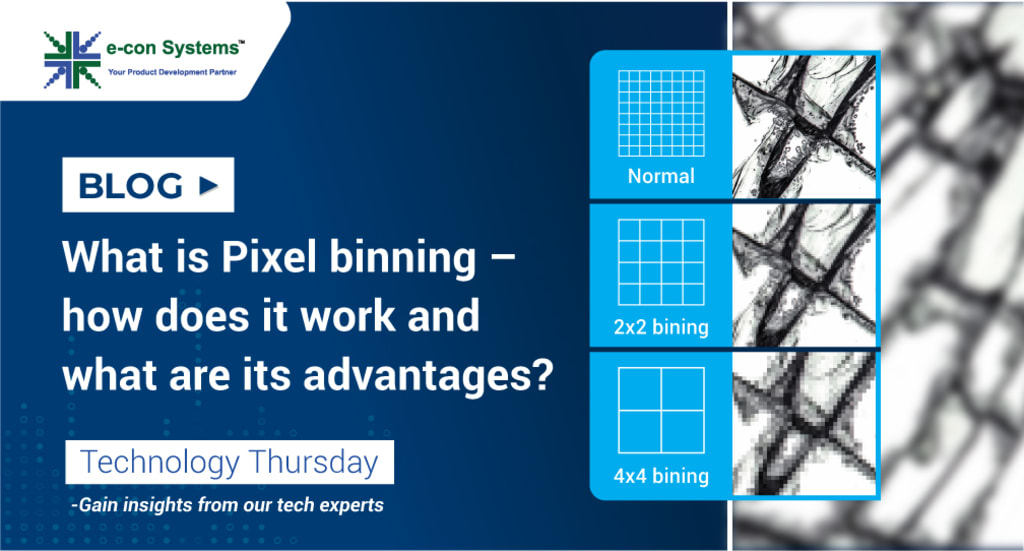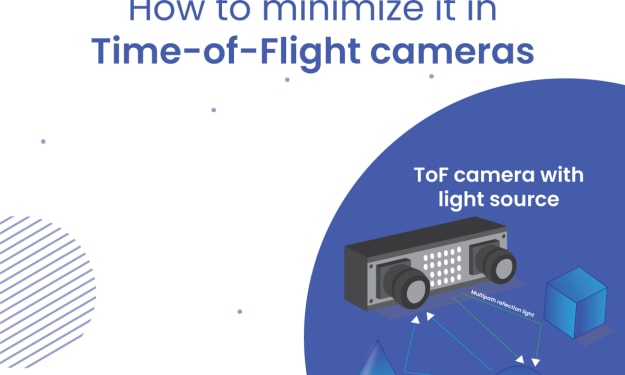What is pixel binning – how does it work and what are its advantages?
Pixel binning, also known as image binning, is becoming more common in camera-based applications. However, it has created a lot of discussion over whether it is truly required.

Because it's a feature incorporated in many modern smartphones, the phrase "pixel binning" has been bandied around casually in recent years. Even if the average user has never heard of pixel binning, it makes a considerable impact in image quality.
In this blog, we will attempt to learn what Pixel Binning means – and how exactly it ensures superior image quality.
How do pixels play a role in embedded vision and cameras?
To comprehend the notion of pixel binning, you must first comprehend what a pixel is. Pixels, also called photosites, are physical pieces on a camera sensor that capture light to generate images. Pixel size is measured in microns (a millionth of a metre), and anything smaller than one micron is considered microscopic.
A larger pixel will be able to collect more light than a smaller one. In a dark club or after dusk, when light is scarce, a sensor with a high pixel size is often used to capture more light and achieve the desired image quality. A smaller pixel, on the other hand, aids in the capturing of minute objects and features. For example, the e-con SystemsTM See3CAM 130 – 13MP autofocus USB camera – has a pixel size of 1.1m (which is considered small), whereas the See3CAM CU81 – 4K HDR USB camera – has a pixel size of 3m (which is considered large).
The problem now is that if you want a high-resolution camera (like See3CAM 130), the pixel size is going to be smaller. This reduces the camera's sensitivity. The sensor size will rise if you use a camera with a large pixel size. This is a hurdle if your application requires a compact form factor camera. Furthermore, if you wish to take advantage of the additional advantages of a small pixel size camera, such as the capacity to catch small objects while maintaining high sensitivity, the traditional approach will not work.
Image binning comes to the rescue in this situation. A camera with picture binning can imitate a larger pixel size without the need for a larger sensor. In the next parts, we'll delve deeper into the subject.
What is Image Binning?
Pixel binning is a one-of-a-kind technique for improving sensitivity in cameras with microscopic pixels. By combining the electric current of numerous pixels close together, the sensor's pixel size is effectively enlarged. In other words, a sensor having a pixel size of 1.1m x 1.1m will now have a size of 2.2m x 2.2m after 4-to-1 pixel binning (or 22 pixel binning). As a result, pixel binning allows the camera to capture higher-quality photographs in low-light situations by enlarging the sensor's pixels.
How does Image Binning work?
In pixel binning, the demosaicing method merges information from four pixels into one (in the case of a 4-to-1 binning), making the technology effectively an Image Signal Processor level implementation. Let’s call pixel binning what it is: It combines pixels in a 2×2 grid, 2×1 grid, 3×3 grid, or a 4×4 grid into one. Each pixel’s information is now integrated into a single big Super Pixel.
Pixel binning is the process of combining data from four neighboring pixels into a single “superpixel,” helping camera manufacturers squeeze the last bit of performance out of existing sensor designs. As a result, the image’s effective resolution is 1/4th of the sensor’s resolution (in the case of a 4-to-1 or 2×2 pixel binning). However, this doesn’t cause a challenge in a vast majority of embedded vision applications since cameras while capturing images in low light environments, can typically compromise on resolution.
What are the advantages of Image or Pixel Binning
We have already touched upon the most important advantages of image binning. Let us a have a comprehensive look at them here.
With pixel binning, the sensor’s sensitivity is greatly increased which is extremely useful in night vision applications and low light environments.
Different types of pixel binning (2×2, 3×3, 4×4, etc) offers you the flexibility to find the right resolution-pixel size combination. This is helpful when you wish to go for a customized camera solution to fit your application requirements.
As embedded systems are getting smaller and smaller, a camera with image binning can help you limit your camera size, at the same time achieving the required sensitivity. This also gives product developers the flexibility to offer more space to other hardware components used in the device.
The benefits of pixel binning may not be significant enough in bright light to justify the resolution trade-off. So it is a good idea to opt for pixel binning only when your application demands it. You could consult an embedded camera manufacturer like e-con Systems™ to guide you through the camera selection process.
This article orignial published on https://www.e-consystems.com/blog/camera/technology/what-is-image-binning-how-does-it-work-and-what-are-its-advantages/
About the Creator
e-con Systems
Established in 2003, e-con Systems has grown into a leading OEM camera manufacturer with wide global footprint.






Comments
There are no comments for this story
Be the first to respond and start the conversation.